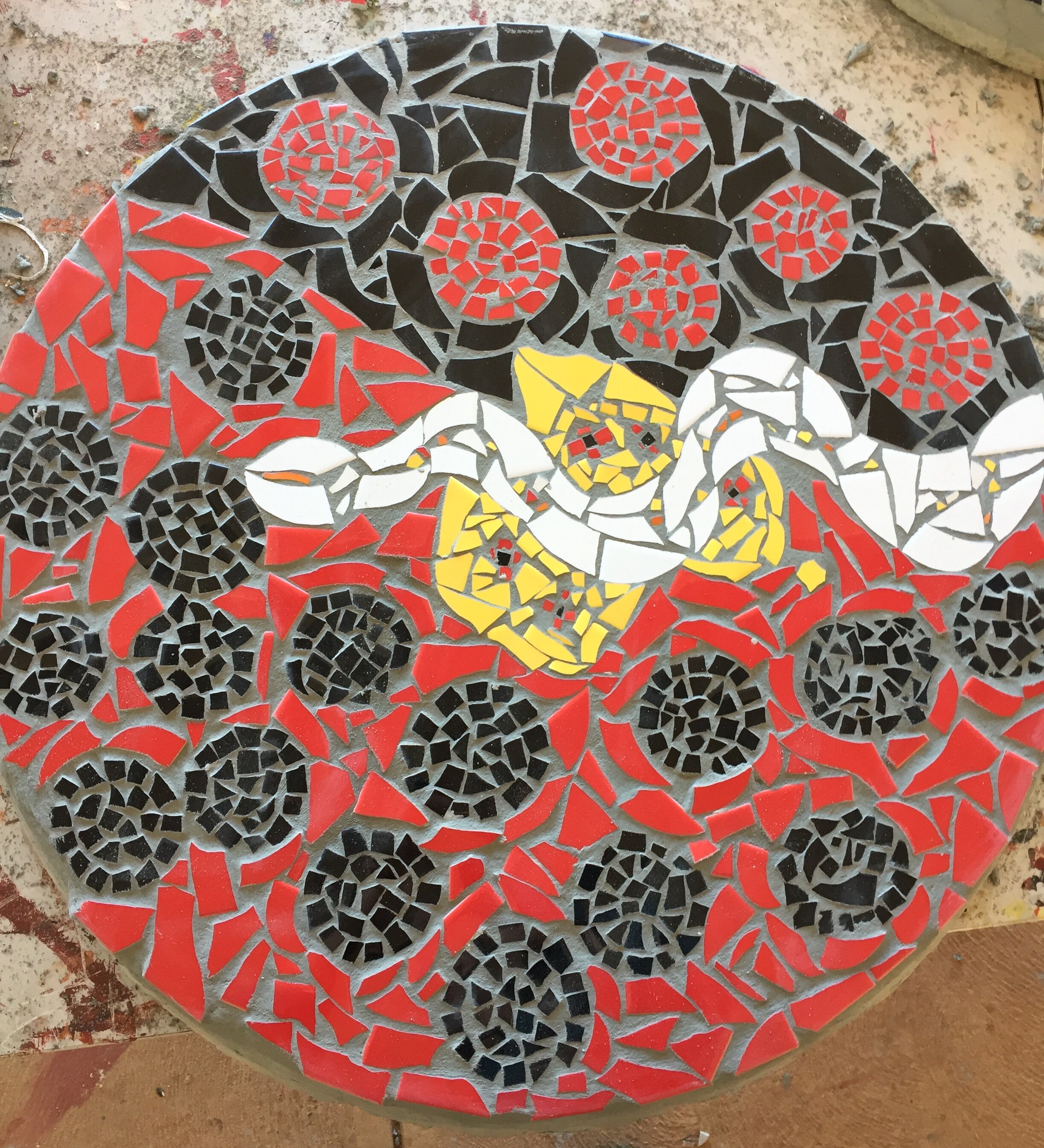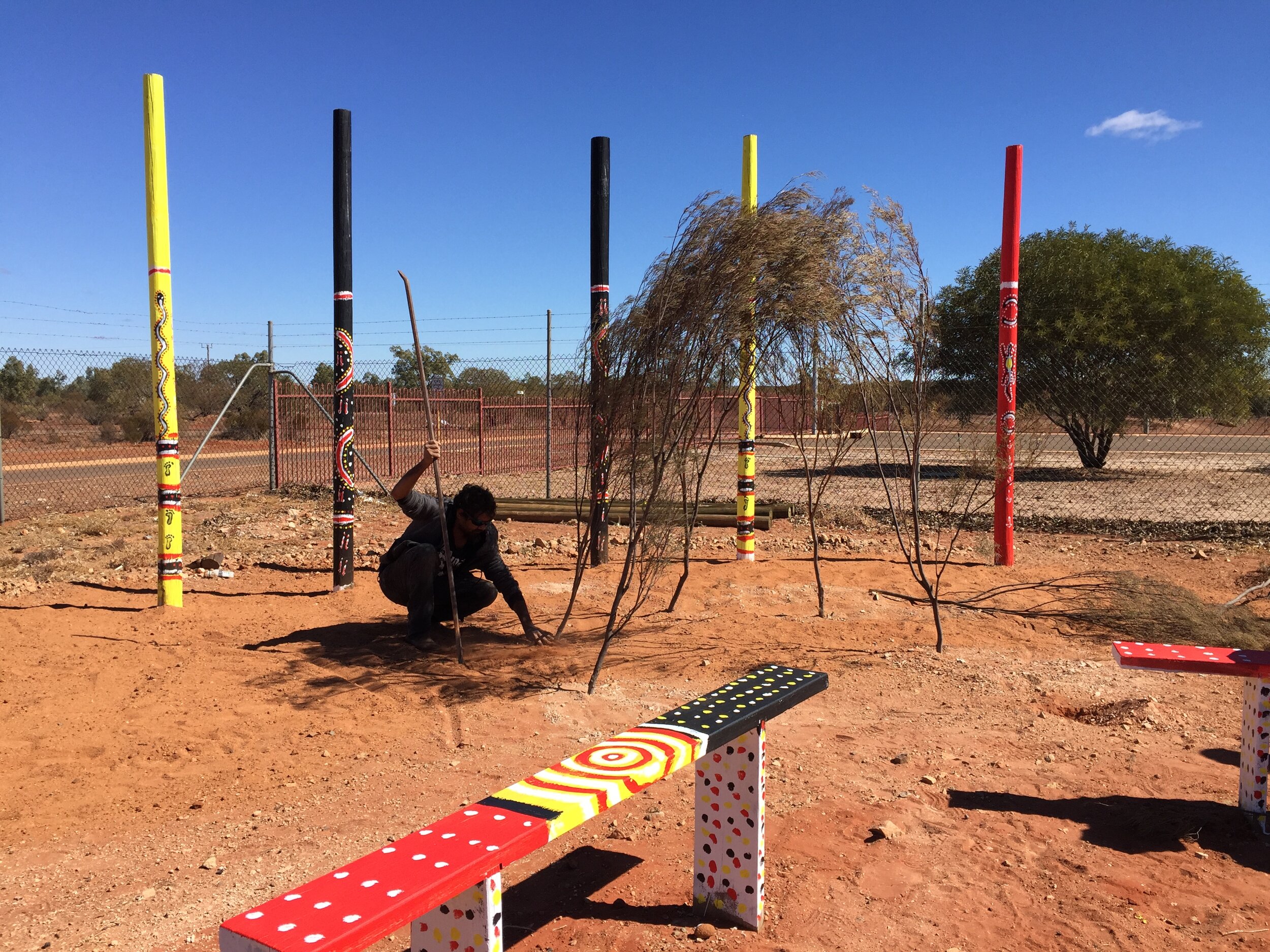Two-way learning with mosaics
A powerful creative project with Wiluna Remote Community School.
Wiluna Remote Community School (WRCS) approximately 950km from Perth and on the traditional lands of the Martu people, is governed by community representatives who want their students to be strong in learning, culture, and language (Martu and English). They wish to see a strong relationship between school and community to increase the changes of students completing their education.
We have worked with WRCS since 2010 on various initiatives including two mosaic projects - vegetable garden artwork in 2012 and campus artwork in 2017. Both of these projects were based on two-way learning ethos, where students learn the science that links Aboriginal ecological knowledge to the Australian Curriculum on Science through on-Country and classroom projects.
The school approached Community First Development (formerly ICV) to work with them to make mosaics for the fire pit or ‘yarning area’ they were building. Community First Development volunteer and artist, Jane, who facilitated the previous mosaic projects at WRCS, returned to work with the students, teachers and community Elders to create the new mosaics, this time on round stone pavers. Senior Elder, Stuart Long, was instrumental in preparing the mosaic site and providing cultural guidance. Fifteen students helped design and make the mosaics based on Martu cultural beliefs, such as the Seven Sister Dreaming and the Emu Dreaming in the Milky Way.
During NAIDOC Week 2019, the community were invited to view the completed mosaics at the school and enjoy a parade, a BBQ and cultural activities. Thank you for supporting this creative project!
“I’d like to do this for the kids so they can have that little bit of respect for our Elder ones and learn how to carry [culture] on and learn more skills [about Martu people].”
“The Martu cultural references within those mosaics encompass two-way learning, which is making sure culture is brought in, spoken about and reflected in the school.”
“Two-way learning is important because it shows how Martu and teachers can work together effectively to empower Martu as educators and to value their cultural knowledge. The creation of the mosaics in this project is two-way learning on action.”



